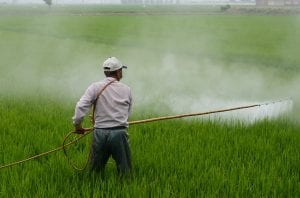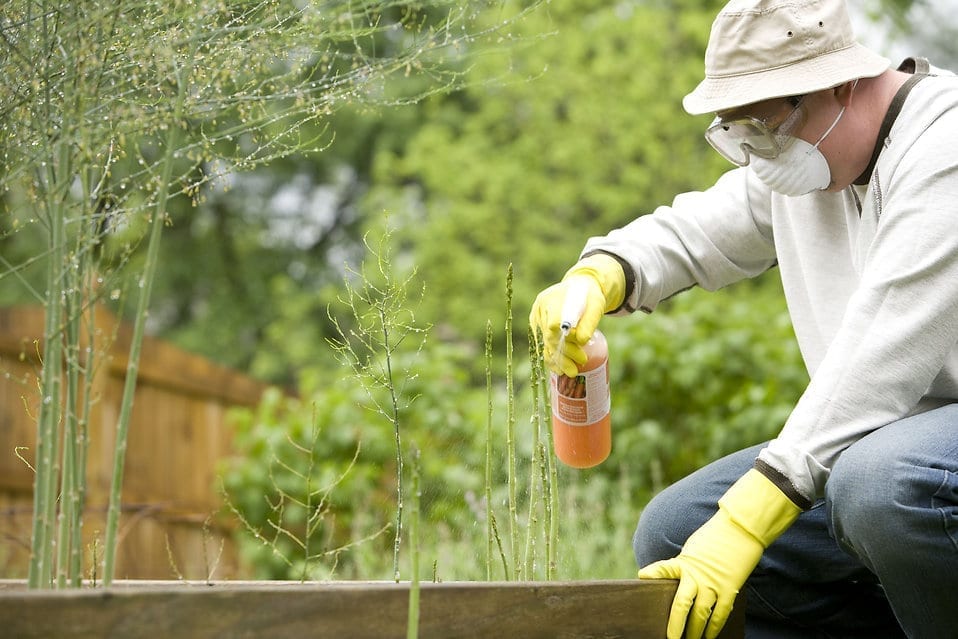At the moment, paraquat is banned in 32 countries, including China.
Since 1961, paraquat, a highly toxic herbicide, has been used on more than 100 crops in the United States to eliminate weeds and grasses that are resistant to glyphosate, another dangerous product sold under the brand name Roundup. Throughout the world, paraquat is one of the most popular herbicides. However, in the United States, only licensed applicators can employ paraquat, as the risk of poisoning is very high. It can be found under numerous brand names, such as Bonfire, Devour, Helmquat, Quik-Quat, Blanco and Parazone. One of the most renowned manufacturers of paraquat in the country is Syngenta. Nevertheless, there are numerous other companies that produce it, such as Chevron Chemical Company, United Phosphorous, Innvictis Crop Care LLC, and Adama Group.
People who intend to use paraquat, who are mostly agricultural workers and farmers, must undergo a mandatory training provided by the Environmental Protection Agency before they can mix, load and apply the herbicide. This requirement came into effect in 2017. Before that year, people could use paraquat under the supervision of a licensed applicator, which is no longer the case nowadays. The purpose of the training is to teach future users of paraquat about the toxicity of the herbicide, the new label requirements and restrictions and the consequences of misuse. While the majority of paraquat manufacturers include a warning of the danger of paraquat poisoning on the label of their product, none of them mention the risk of developing Parkinson’s disease as a result of prolonged exposure to this herbicide.
The Connection Between Paraquat Exposure and Parkinson’s Disease
People who are regularly exposed to paraquat have a 250% higher risk of developing Parkinson’s disease. In other words, individuals who are exposed to paraquat are 2.5 times more susceptible to developing this brain disorder than those who are not. The rate of diagnosis for this brain disorder rose by 107% from 2013 to 2017, which may be related to the increasing use of paraquat in the United States. From 2011 to 2017, the annual use of paraquat more than doubled, increasing from over 3 million kilograms to nearly 7 million kilograms. The state where the largest amount of paraquat is used is California, with 10,262,736 kilograms per year.

Exposure to paraquat occurs mostly through inhalation, skin contact and ingestion. Although the majority of herbicide applicators wear adequate protective equipment when working with this herbicide, they still come in contact with it after paraquat is applied to crops. Paraquat destroys unwanted plants by causing oxidative stress, a process that involves breaking down atoms free from molecules of living cells it comes in contact with. When someone inhales paraquat mist or when the herbicide is absorbed through the skin, it travels to the lungs, the olfactory bulb, or the stomach and eventually reaches the substantia nigra pars compacta, a portion of the brain responsible for producing dopamine.
Dopamine is a crucial neurotransmitter that plays a crucial role in reward and movement regulation in the brain. People with Parkinson’s disease usually have this portion of the brain damaged, which greatly affects their level of dopamine. In the absence of dopamine, they begin experiencing the symptoms of Parkinson’s disease, which include a tremor in hands, arms, legs, jaw and head, stiffness of the limbs and trunk, slowness of movement and impaired balance and coordination. It is worthy of note that agricultural workers and farmers are not the only demographics at high risk of developing Parkinson’s disease as a consequence of paraquat exposure, as medical studies found that any exposure to paraquat within 1,600 feet of a home increases the risk of developing Parkinson’s disease by 75%. Therefore, people who live in close proximity to farming communities are also at high risk of coming to struggle with this brain disorder.
The Lawsuits Filed Against Paraquat Manufacturers
A lawsuit was filed by 10 former farmworkers, including Thomas and Diana Hoffman, diagnosed with Parkinson’s disease as a consequence of paraquat exposure in St. Clair County, Illinois on October 6th, 2017 against multiple companies that manufacture the herbicide, such as Syngenta, Chevron Chemical Company and Growmark, Inc. All plaintiffs are Illinois residents and are seeking to recover damages for personal injuries resulting from exposure to paraquat, which led to the development of Parkinson’s disease in them or their spouses. One of the plaintiffs, who has recently joined the lawsuit, had been using paraquat on a regular basis between 1975 and 2017 on the farm of her parents, as well as on her own farm from 1980 to 2017, where she was growing corn, soybeans and wheat. She was diagnosed with Parkinson’s disease in 2019.
However, this is not the only lawsuit filed against manufacturers of paraquat, as there is another one that is currently ongoing in California in which plaintiff Russell Denes, a Missouri resident, allegedly developed Parkinson’s disease as a result of paraquat exposure, although he underwent the certification training required by the Environmental Protection Agency to apply the herbicide. Furthermore, Paul Rakoczy, a former farmworker who used paraquat between 2013 and 2017 and was exposed to it through skin absorption, ingestion and inhalation while applying the herbicide in Long Beach, California, also filed a lawsuit against Syngenta on March 25th, 2021. He received a diagnosis of Parkinson’s disease in December 2015.
Lastly, in December 2018, another lawsuit was filed against the company by Lorena Wendler, the wife of Marvin Wendler, who was frequently exposed to low doses of paraquat while using it in Illinois. She also came to struggle with Parkinson’s disease as a result of paraquat exposure. Her lawsuit was also filed against Chevron Phillips Chemical Company LP, Bergmann-Taylor Inc. and Growmark Inc. Another lawsuit was filed against Syngenta in federal court in March 2021 by Stephen Durbin, who was repeatedly exposed to paraquat between 1983 and 2002.
Regardless of the lawsuits, plaintiffs state that the companies that manufactured the paraquat they had been using failed to warn of the risk of developing Parkinson’s disease as a consequence of frequent exposure. They allege personal injury, negligence and product liability. We should expect more and more lawsuits and claims filed against companies that manufacture paraquat in the future, as the employment of this herbicide is undoubtedly increasing with the resistance of weeds and grasses to other products.
The “Protect Against Paraquat Act”
Nadya Velasquez, a politician who has been serving in the United States House of Representatives since 1993, has recently introduced the “Protect Against Paraquat Act”, whose purpose is to completely ban this herbicide in the country. At the moment, paraquat is banned in 32 countries, including China, which is notorious for not placing great emphasis on the wellbeing of its agricultural workers. According to the document, her mission is to cancel the registration of all uses of the pesticide paraquat and for other purposes. Furthermore, the “Protect Against Paraquat Act” states that paraquat shall be deemed to generally cause unreasonable adverse effects to humans in part due to its acute systemic toxicity and for being a known neurotoxin which causes Parkinson’s disease. The Environmental Protection Agency is to make a decision with regard to the approval or rejection of the “Protect Against Paraquat Act” by the end of 2022.


Join the conversation!